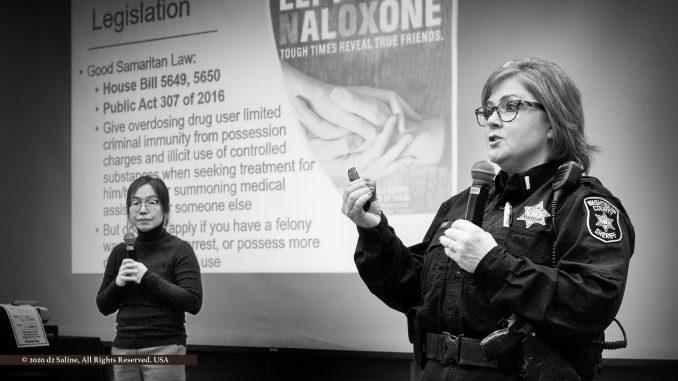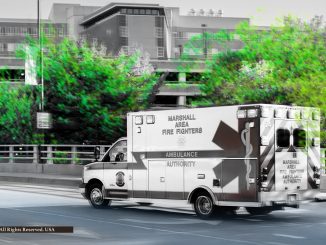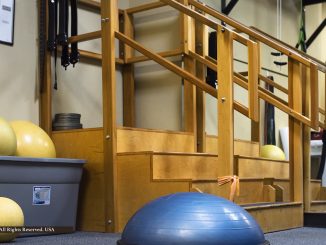
In the mid-1980s, First Lady Nancy Reagan gave particular voice to a revamped “War on Drugs” with three words: “Just say no.” [1-5]
With each passing year, criticisms of this mantra point to the alarming number of individuals who do not take this advice to heart. Some by choice, others feeling incapable of doing so. Too many without knowledge or access or hope when it comes a place upon which they might rely for help. [6,7]
Today, “opioids” appear most commonly cited as the chemical substance of crisis. Twice in 2019, the University of Michigan and Harvard University collaborated to host a joint summit focused on policies and practices. Last May, our local A2Y Chamber headlined its May Early Edition “The Opioid Crisis.” This summer, Dawn Farm will host an educational panel aimed at “Coordinating a Community Response to the Opioid Epidemic.” [8-13]
“Epidemic“?
According to the United States Centers for Disease Control and Prevention, “68% of the more than 70,200 drug overdose deaths in 2017 involved an opioid. [14]
- In 2017, the number of overdose deaths involving opioids (including prescription opioids and illegal opioids like heroin and illicitly manufactured fentanyl) was six times higher than in 1999 [emphasis added].
- On average, 130 Americans die every day from an opioid overdose [emphasis added].
Recognizing the effects of this on those at arms-length from the afflicted — and often in a position to act as first, first responders — “Families Against Narcotics” (“FAN”) was formed in part “to remove the stigma associated with addiction through education and to inform the community of the growing problem of substance dependency or addiction among all ages, and the increasing use of heroin by our young people.” [15,16]
During its first meeting held on the campus of Washtenaw County College last evening, local Chapter President Mario Nanos opened by stating that “46% of Americans know a relative or friend who is struggling with addiction.” [17]
Naloxone is a reasonably available “opioid antagonist that is used to temporarily reverse the effects of an opioid overdose, namely slowed or stopped breathing” advocated by the Surgeon General of the United States Public Health Service. [18,19]
For patients currently taking high doses of opioids as prescribed for pain, individuals misusing prescription opioids, individuals using illicit opioids such as heroin or fentanyl, health care practitioners, family and friends of people who have an opioid use disorder, and community members who come into contact with people at risk for opioid overdose, knowing how to use naloxone and keeping it within reach can save a life. [20]
A half-dozen years ago, Dr Chin Hwa (Gina) Y Dahlem PhD of the University of Michigan School of Nursing, and Lieutenant Lisa King of the Washtenaw County Sheriff’s Department took the initiative in developing an educational program on the use and effects of Naloxone to individuals at the point of overdose. By August of 2015, their work had resulted in having the entirety of the Washtenaw County Sheriff’s Department use of Naloxone in the field. [21,22]
It is believed that four hundred lives have been saved to date as a result of this.
Further to this, Dr Dahlem made a number of points to underscore the value of family members keeping Naloxone rescue devices available in areas where others at risk of opioid overdose exist. [23]
- Death from overdose is rarely instantaneous.
- The majority of overdoses occur in the presence of others.
- One death can be prevented for every 227 Naloxone kits distributed — making this a very cost effective option for intervention.
As Mr Nanos explained, the purpose of this February 10 Washtenaw FAN program was threefold. It both motivated action and provided exact instructions on how almost anyone can properly administer Naloxone to an individual presenting symptoms of an opioid overdose (with minimal downside risk of error in doing so); his organization then distributed free kits to all in attendance who were interested in receiving them. [24]
“All of our trainings so far have been on the east side of 23,” he said to the group last night. “But overdoses are greater on this side, so we’re going to change that — thanks to Washtenaw Community College helping us out by providing space to meet like we have here tonight.”
Mrs Reagan is to be lauded for her initiative taken over three decades ago to further associating The White House with broad issues surrounding substance abuse in America. Many causes are sparked, many people helped by putting a succinct imperative to direction.
Last night, those words were made that much more current, closer to home — personal, compassionate, and practical.
References
- “Nixon’s ‘war on drugs’ began 40 years ago, and the battle is still raging” Ed Vulliamy (July 23, 2011) The Guardian.
- Cracks in the System: Twenty Years of the Unjust Federal Crack Cocaine Law, Deborah J Vagins and Jesselyn McCurdy (October 2006) American Civil Liberties Union (ACLU).
- “Just Say No” (August 21, 2018) History.
- “CNN: 1986: Nancy Reagan’s ‘Just say no’ campaign” CNN (February 28, 2011) YouTube.
- “When Nancy Reagan Told Kids to ‘Just Say No’” Jake Rossen (November 9, 2017) Mental Floss.
- “Trends & Statistics” National Institute on Drug Abuse, National Institutes of Health (NIH).
- “Illicit Drug Use” Centers for Disease Control and Prevention (CDC).
- “Opioids: Policy to Practice, A University of Michigan – Harvard University Summit” (2019) University of Michigan.
- “University of Michigan, Harvard team up to tackle opioid crisis” Martin Slagter (May 10, 2019) mLive.
- A2Y: Ann Arbor / Ypsilanti Regional Chamber (home page).
- “Early Edition – The Opioid Crisis” (May 15, 2019) Ann Arbor / Ypsilanti Regional Chamber.
- “Coordinating a Community Response to the Opioid Epidemic” (June 23, 2020) Dawn Farm.
- “Community Response to the Opioid Epidemic” (June 23, 2020) Saline Journal.
- “Understanding the Epidemic” CDC: Centers for Disease Control and Prevention.
- FAN: Families Against Narcotics (home page).
- “What We Do” FAN: Families Against Narcotics.
- “Washtenaw County” FAN: Families Against Narcotics.
- “US Surgeon General’s Advisory on Naloxone and Opioid Overdose” United States Department of Health & Human Services (HHS).
- “Naloxone” Health Department, Washtenaw County Michigan.
- “Fentanyl” CDC: Centers for Disease Control and Prevention.
- “Chin Hwa (Gina) Y Dahlem PhD, FNP-C, FAANP” School of Nursing, University of Michigan.
- “Lisa King” Washtenaw County Michigan.
- “Take Action: Opioid Overdose Prevention Education” PowerPoint presentation, Chin Hwa (Gina) Dahlem and Lisa King (February 10, 2020) Community Mental Health Partnership of Southeast Michigan and School of Nursing, University of Michigan.
- Take Action (home page).



